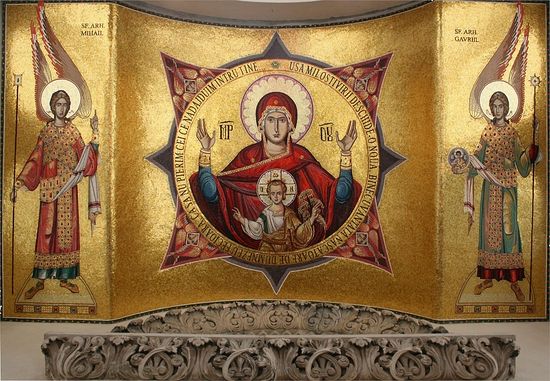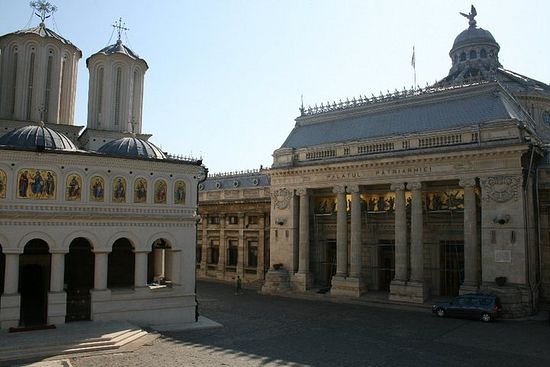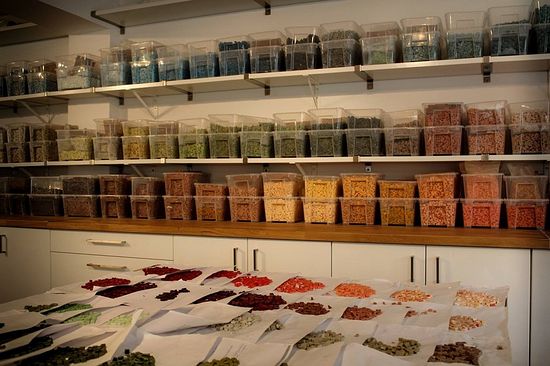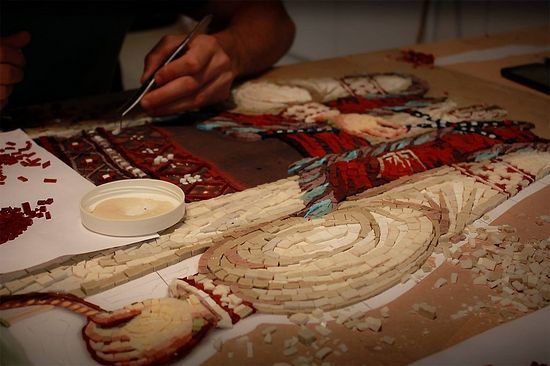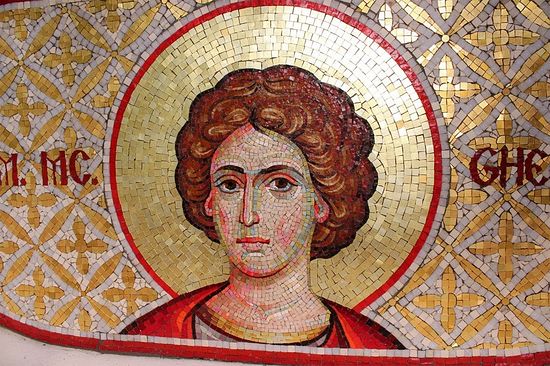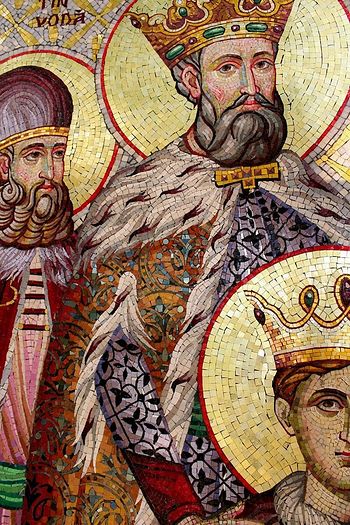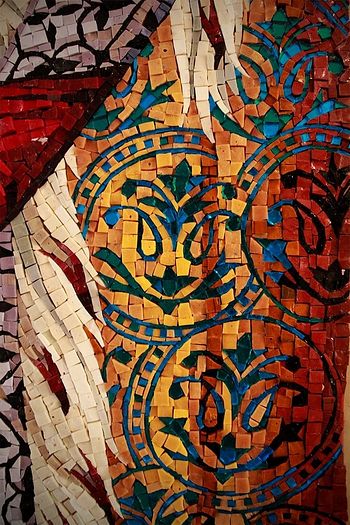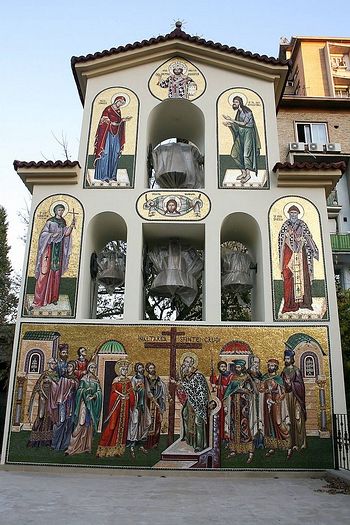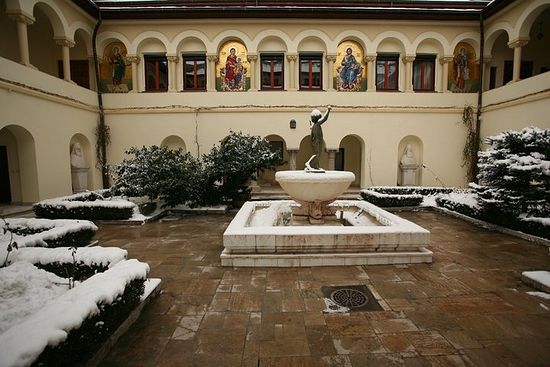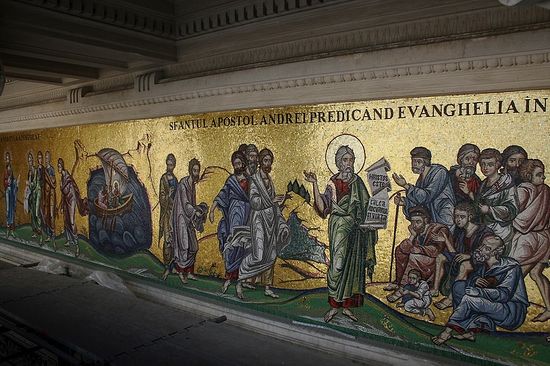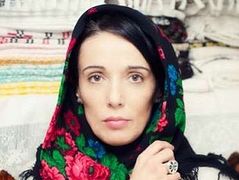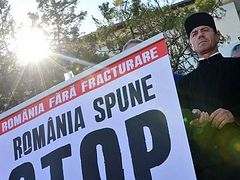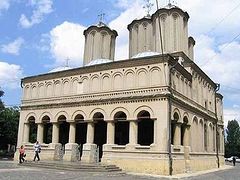Source: Orthodox Arts Journal
by Jonathan Pageau
Mozaicon was started by a group of Romanian fresco artists who came together in 2008 to create the mosaics for the Patriarchal Cathedral Complex in Bucharest. After the initial project, only one of the artists continued working in mosaics until 2010, when once again other artists joined in to work on multiple projects in Romania but also in other countries, like Greece, the US and Australia. The group is fluid, changing according to orders, yet there is a full time core of 4 artists.
I asked Anca Sirbu, one of permanent artists in the group to give me some insight on how they work, their influences and approach. Sirbu’s comments about influence are not surprising: Hagia Sophia, Ravenna, a desire to recapture the subtlety and richness of ancient mosaics while being attentive to what is happening right now in Belarus and other Orthodox countries.
What had struck me in seeing their work is the particular intensity of the color, the very robust contrasts compared to the Hagia Sophia mosaics for example. This Sirbu relates to the new techniques and medium of Murano glass tiles. They also do not use grout and with a dark background, this makes the colors more intense.
Their process is very open and they are constantly looking for more lively ways to represent the saints and different surfaces. Sirbu feels like her process is almost as if she is painting with tiles, aware of a modern preoccupation for finesse in representation and how our experience of painting will inevitably affect mosaics. This to me is quite obvious when looking at close-ups of the faces they are making. One finds much subtelty and complexity of color, variation, contrast and tonality, all of which is used in a shimmering manner that opens facial expressions and gives simultaneously an iconic and lively sense to the image.
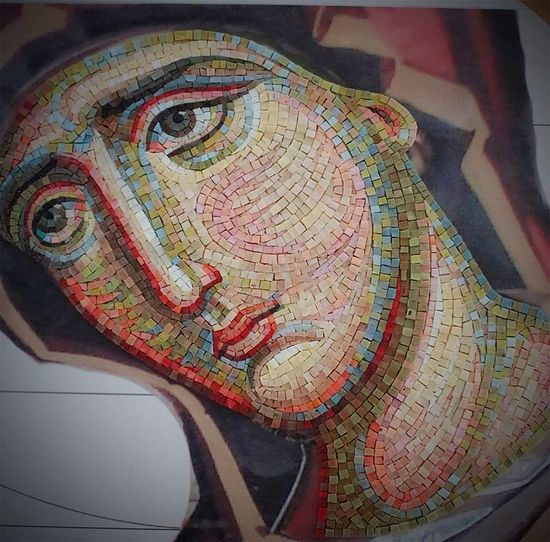 Subtelty and complexity of color. Notice the use of extremely “hot” pink on the warm side of the face.
Subtelty and complexity of color. Notice the use of extremely “hot” pink on the warm side of the face.
What also strikes the viewer is their experimental use of color, which can most clearly be see in a very dense layering of folds and patterns. Such density creates surfaces bursting with energy, vibrating almost. Some of it is on the verge of going to far but thankfully never does.
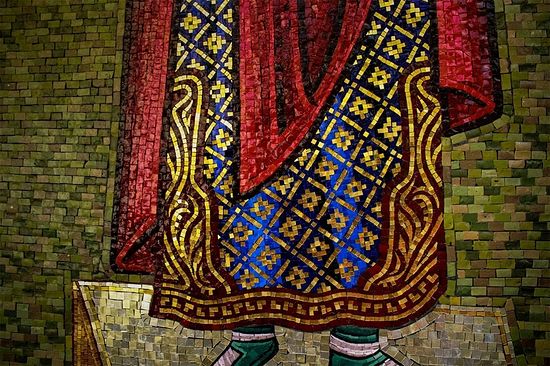
It is always refreshing to see artists so taken up by their work, both anchored in ancient traditions while always keeping their eyes open for ways to make their work better. For Sirbu, everything they are doing is a process, stages in discovering the most beautiful ways to render Christ and his saints to the glory of God.
The group does not have a website, but one can see more of their work on their facebook page.
https://www.facebook.com/mozaicon

